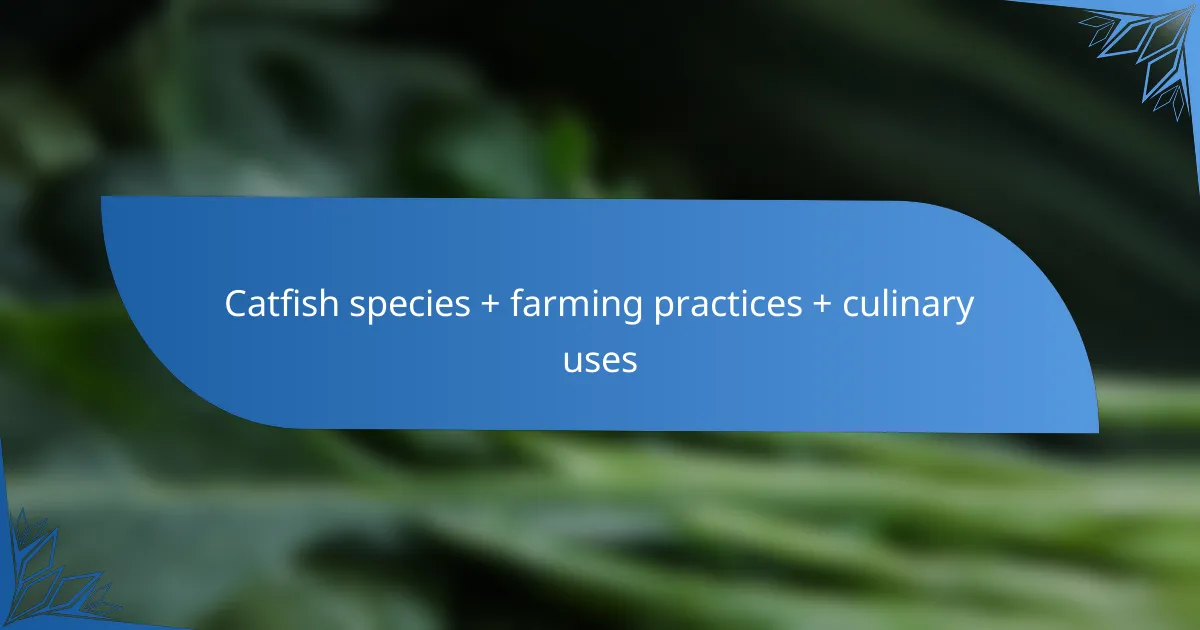
What are the different species of salmon?
The different species of salmon include Chinook, Coho, Sockeye, Pink, and Atlantic salmon. Chinook salmon, also known as king salmon, is the largest species. Coho salmon, or silver salmon, is known for its rich flavor. Sockeye salmon has bright red flesh and is prized for its taste. Pink salmon is the smallest species and is often canned. Atlantic salmon is primarily farmed and not native to the Pacific. These species are recognized for their unique characteristics and habitats. They are found in both the Pacific and Atlantic oceans. Each species has distinct nutritional benefits and culinary uses.
How do the various salmon species differ from one another?
The various salmon species differ primarily in their size, color, flavor, and habitat. Chinook salmon, the largest species, can weigh over 100 pounds. Sockeye salmon is known for its bright red flesh and rich flavor. Coho salmon has a milder taste and a silver-blue color. Pink salmon is the smallest species, typically weighing around 5-6 pounds. Atlantic salmon, primarily farmed, has a lighter color and milder flavor compared to Pacific species. Each species has distinct spawning habits and migratory patterns. For example, Chinook salmon can travel over 1,000 miles upstream to spawn. These differences affect their culinary uses and nutritional profiles.
What are the key characteristics of Atlantic salmon?
Atlantic salmon is a species of fish known for its distinctive pink flesh and rich flavor. It typically grows to lengths of 28 to 30 inches and can weigh up to 30 pounds. This species is native to the North Atlantic Ocean and is often found in rivers and coastal waters. Atlantic salmon undergoes a life cycle that includes both freshwater and saltwater phases. They are anadromous, meaning they migrate from the ocean to freshwater to spawn. The fish has a streamlined body, a forked tail, and a silvery skin with black spots. Atlantic salmon is also known for its high omega-3 fatty acid content, which contributes to its health benefits. These characteristics make Atlantic salmon a popular choice for both culinary uses and aquaculture.
What distinguishes Pacific salmon species from each other?
Pacific salmon species are distinguished by their unique physical characteristics, life cycles, and habitats. Each species exhibits specific coloration, size, and fin shapes. For instance, Chinook salmon are the largest and have a blue-green back with silver sides. Coho salmon, smaller than Chinook, feature a more pronounced silver color and a unique white mouth. Sockeye salmon are recognized for their bright red flesh and green head during spawning.
Life cycles also vary among species. Chinook typically have a longer life cycle, living up to seven years, while Coho usually live for only three years. Habitat preferences differ as well; some species prefer freshwater rivers for spawning, while others thrive in coastal marine environments.
Genetic studies have shown that these differences are rooted in evolutionary adaptations to their environments. For example, the distinct migratory patterns of each species reflect their adaptations to specific ecological niches. These attributes collectively contribute to the identification and classification of Pacific salmon species.
What are the unique traits of sockeye salmon?
Sockeye salmon has distinctive red flesh and a bright red exterior during spawning. This species is known for its high oil content, which contributes to its rich flavor. Sockeye salmon typically weighs between 5 to 15 pounds. They are also recognized for their migratory behavior, traveling long distances from the ocean to freshwater rivers to spawn. Additionally, sockeye have a unique life cycle, spending one to four years in freshwater before migrating to the ocean. Their strong swimming ability allows them to navigate upstream against strong currents. Sockeye salmon are also a crucial part of their ecosystem, serving as a food source for various predators. These unique traits make sockeye salmon highly sought after for culinary uses and conservation efforts.
How does the life cycle of salmon species vary?
The life cycle of salmon species varies primarily in their spawning habitats and migration patterns. Different species, such as Chinook, Coho, and Sockeye, have unique spawning preferences. Chinook salmon typically spawn in larger rivers, while Coho prefer smaller streams. Sockeye salmon are known for their specific requirement of lake systems for spawning.
The timing of their life cycles also differs. For instance, Chinook salmon can take up to five years to mature, while Coho usually mature in three years. Additionally, the distance salmon migrate to reach spawning grounds can vary significantly. Some species travel hundreds of miles upstream, while others may have shorter migration routes.
Environmental factors, such as water temperature and flow, influence these variations in life cycles. Research indicates that these adaptations help salmon species thrive in diverse habitats.
Why is understanding salmon species important?
Understanding salmon species is important for various reasons. Different species of salmon have distinct nutritional profiles. For instance, sockeye salmon is rich in omega-3 fatty acids, while coho salmon has lower fat content. This knowledge helps consumers make informed dietary choices. Additionally, understanding species aids in sustainable fishing practices. Overfishing can threaten certain species, impacting ecosystems. Knowledge of salmon species also enhances culinary experiences. Different species offer unique flavors and textures. For example, king salmon is prized for its rich taste, while pink salmon is milder. Lastly, recognizing species can influence conservation efforts. Protecting diverse salmon populations is vital for biodiversity and ecological balance.
How does species knowledge impact fishing practices?
Species knowledge significantly impacts fishing practices by informing fishers about the behavior and habitat of different salmon species. Understanding the specific spawning and feeding habits of salmon allows fishers to target their efforts more effectively. Knowledge of seasonal migrations helps in determining the best times to fish. It also aids in selecting appropriate gear and techniques for each species. For instance, different salmon species may require varied bait and lure types. Additionally, awareness of conservation status influences sustainable fishing practices. This ensures that fishers comply with regulations aimed at protecting vulnerable populations. Research shows that informed fishing practices can lead to higher catch rates and less environmental impact.
What role do salmon species play in ecosystem health?
Salmon species play a crucial role in ecosystem health. They are key contributors to nutrient cycling in aquatic and terrestrial ecosystems. When salmon spawn, they transport nutrients from the ocean to freshwater environments. This process enriches the soil and water, benefiting various plant and animal species. Additionally, salmon serve as a food source for numerous predators, including bears, eagles, and other fish. Their presence helps maintain the balance of the food web. Studies indicate that salmon contribute significantly to the biomass of many ecosystems, enhancing biodiversity. Thus, the health of salmon populations directly impacts the overall health of their ecosystems.

What nutritional benefits do salmon provide?
Salmon provides numerous nutritional benefits. It is rich in omega-3 fatty acids, which support heart health. Omega-3s can reduce inflammation and lower the risk of chronic diseases. Salmon also contains high-quality protein, essential for muscle maintenance and repair. Additionally, it is a source of vitamins B12 and D, important for energy metabolism and bone health. The fish is also rich in selenium, an antioxidant that helps protect cells from damage. According to the USDA, a 3-ounce serving of cooked salmon contains about 22 grams of protein and 2,260 mg of omega-3 fatty acids. This makes salmon a nutrient-dense food choice for a balanced diet.
What are the key nutrients found in salmon?
Salmon is rich in several key nutrients. It provides high-quality protein, essential for muscle repair and growth. Omega-3 fatty acids are abundant in salmon, contributing to heart health and brain function. Salmon also contains vitamins such as B12, which supports nerve function and energy production. Additionally, it is a good source of selenium, an antioxidant that helps protect cells. The presence of potassium in salmon aids in maintaining healthy blood pressure levels. These nutrients make salmon a highly nutritious food choice.
How does salmon contribute to heart health?
Salmon contributes to heart health primarily through its high omega-3 fatty acid content. Omega-3 fatty acids help reduce inflammation and lower blood pressure. They also improve cholesterol levels by increasing HDL (good cholesterol) and decreasing triglycerides. Studies show that regular consumption of salmon can reduce the risk of heart disease. For instance, the American Heart Association recommends eating fatty fish like salmon at least twice a week. This dietary choice is linked to a 30% lower risk of heart-related issues. Additionally, salmon is rich in antioxidants, which further support cardiovascular health.
What vitamins and minerals are abundant in salmon?
Salmon is abundant in several vitamins and minerals. Key vitamins include B12, B6, and D. Salmon also provides significant amounts of selenium and phosphorus. Vitamin B12 supports nerve function and red blood cell formation. Vitamin B6 aids in protein metabolism and cognitive development. Vitamin D is essential for bone health and immune function. Selenium acts as an antioxidant, protecting cells from damage. Phosphorus plays a crucial role in bone health and energy production. These nutrients contribute to the overall health benefits of consuming salmon.
Why should salmon be included in a balanced diet?
Salmon should be included in a balanced diet due to its rich nutritional profile. It is an excellent source of omega-3 fatty acids, which are essential for heart health. These fatty acids can reduce inflammation and lower the risk of chronic diseases. Salmon also provides high-quality protein, which is vital for muscle maintenance and repair. Additionally, it contains important vitamins and minerals, such as vitamin D and selenium. Studies show that regular consumption of salmon can improve cognitive function and support overall wellness. The American Heart Association recommends eating fatty fish like salmon at least twice a week for optimal health benefits.
How does salmon consumption affect overall health?
Salmon consumption positively affects overall health. It is rich in omega-3 fatty acids, which support heart health. Studies show that omega-3s can lower blood pressure and reduce triglycerides. Salmon also provides high-quality protein essential for muscle maintenance. Additionally, it contains vitamins D and B12, which are important for bone health and energy metabolism. Research indicates that regular salmon intake may lower the risk of chronic diseases. For instance, a study published in the Journal of Nutrition found that omega-3 consumption is linked to reduced inflammation. Overall, incorporating salmon into the diet can enhance nutritional intake and promote well-being.
What are the benefits of omega-3 fatty acids in salmon?
Omega-3 fatty acids in salmon provide numerous health benefits. They support heart health by reducing triglycerides and lowering blood pressure. Omega-3s also promote brain function and may reduce the risk of cognitive decline. Additionally, they possess anti-inflammatory properties that can alleviate symptoms of arthritis. Research shows that consuming omega-3s can improve mood and reduce the risk of depression. The American Heart Association recommends eating fatty fish, like salmon, at least twice a week for optimal health benefits. Omega-3 fatty acids are essential for overall well-being, making salmon a valuable dietary choice.

What are the best cooking methods for salmon?
The best cooking methods for salmon include baking, grilling, poaching, and pan-searing. Baking is a popular method that allows for even cooking and can enhance flavor with seasonings. Grilling imparts a smoky flavor and creates a desirable char on the surface. Poaching keeps the salmon moist and tender, often using broth or wine for added flavor. Pan-searing creates a crispy exterior while keeping the inside tender. Each method preserves the nutritional benefits of salmon, which is rich in omega-3 fatty acids and protein.
How can salmon be prepared in different ways?
Salmon can be prepared in various ways, including grilling, baking, poaching, and smoking. Grilling salmon imparts a smoky flavor and creates a crispy exterior. Baking salmon allows for even cooking and can be enhanced with herbs and spices. Poaching salmon keeps it moist and tender, often using broth or wine for added flavor. Smoking salmon preserves it and adds a rich, savory taste. Other methods include pan-searing, which gives a crispy skin, and broiling, which cooks it quickly under high heat. Each preparation method highlights different flavors and textures of salmon.
What are the advantages of grilling salmon?
Grilling salmon offers several advantages. It enhances the flavor through caramelization, creating a delicious crust. Grilling also retains the fish’s moisture, preventing it from drying out. This method allows for healthier cooking by reducing the need for added fats. Nutritionally, grilled salmon maintains its omega-3 fatty acids, which are beneficial for heart health. Additionally, grilling can be a quick cooking method, taking only about 10-15 minutes. The high heat from grilling can also kill harmful bacteria, making it a safe cooking option. Overall, grilling salmon provides a flavorful, healthy, and efficient way to prepare this nutritious fish.
How does baking salmon enhance its flavor?
Baking salmon enhances its flavor by allowing the fish to cook evenly and retain moisture. This method promotes the natural oils in the salmon to infuse into the flesh. The heat from baking caramelizes the natural sugars, creating a more complex flavor profile. Additionally, herbs and spices used during baking can penetrate the fish, further enhancing its taste. Studies show that baking at moderate temperatures preserves the omega-3 fatty acids, contributing to a rich flavor. The Maillard reaction, which occurs during baking, adds depth and richness to the overall taste.
What are the benefits of poaching salmon?
Poaching salmon offers several benefits. It preserves the fish’s moisture and delicate texture. This cooking method results in a tender and flavorful outcome. Poaching maintains the nutritional integrity of salmon. It minimizes the loss of omega-3 fatty acids, which are beneficial for heart health. Poached salmon is lower in added fats compared to frying or grilling. This method allows for the infusion of flavors from herbs and spices. Additionally, poaching is a simple and quick cooking technique. It is an ideal option for healthy meal preparation.
What tips can help achieve the best results when cooking salmon?
To achieve the best results when cooking salmon, ensure it is fresh and of high quality. Fresh salmon has a bright color and a clean, ocean-like smell. Preheat your cooking surface to the appropriate temperature. This helps to sear the fish properly and retain moisture. Season the salmon with salt and pepper just before cooking. This enhances the natural flavors without overpowering them. Cook salmon skin-side down first if applicable. This allows the skin to become crispy and adds texture. Use a food thermometer to check for doneness. Salmon should reach an internal temperature of 145°F for optimal safety and taste. Let the salmon rest for a few minutes after cooking. Resting allows the juices to redistribute, resulting in a more flavorful piece of fish.
How can seasoning affect salmon dishes?
Seasoning significantly enhances salmon dishes by adding flavor and depth. Proper seasoning can highlight the natural richness of salmon. Common seasonings include salt, pepper, herbs, and citrus. Salt helps to bring out the fish’s natural flavors. Herbs like dill and parsley complement salmon’s buttery texture. Citrus, such as lemon or lime, adds acidity that balances the richness. Spices like paprika or garlic can introduce warmth and complexity. Different seasoning combinations can create diverse culinary experiences. Studies show that well-seasoned salmon can improve overall dish satisfaction and palatability.
What internal temperature should salmon reach for optimal safety and taste?
Salmon should reach an internal temperature of 145°F (63°C) for optimal safety and taste. This temperature ensures that harmful bacteria are killed, making the fish safe to eat. Cooking salmon to this temperature also helps retain its moisture and flavor. The USDA recommends this temperature for all types of salmon. At 145°F, the flesh becomes opaque and flakes easily with a fork. This temperature balances safety and the desirable texture of the fish.
Salmon is a diverse entity encompassing various species, including Chinook, Coho, Sockeye, Pink, and Atlantic salmon, each distinguished by unique characteristics such as size, color, flavor, and habitat. This article provides an overview of these species, highlighting their nutritional benefits, particularly the rich omega-3 fatty acids, and culinary uses. Additionally, it discusses effective cooking methods for salmon, including baking, grilling, poaching, and pan-searing, emphasizing how these techniques enhance flavor while preserving nutritional integrity. Understanding the differences among salmon species is crucial for informed dietary choices and sustainable fishing practices.



